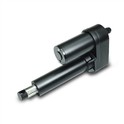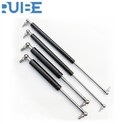Hey there! As a gas damper supplier, I've been in the thick of the industry for quite a while, and I often get asked about the quality standards for gas dampers. So, I thought I'd break it down for you in this blog post.
First off, let's talk about what gas dampers are. In simple terms, gas dampers are devices that use gas to control the movement of a mechanism. They're used in a wide range of applications, from Cabinet Gas Damper to Gas Damper for Car. They help to provide smooth, controlled motion and can also reduce noise and vibration.
Performance Standards
One of the most important quality standards for gas dampers is performance. When it comes to performance, there are a few key factors to consider.
Force and Stroke
The force of a gas damper refers to the amount of resistance it provides. This is typically measured in newtons (N). The right force is crucial depending on the application. For example, a cabinet gas damper might require a lower force to allow for easy opening and closing, while a gas damper for a car hood might need a higher force to support the weight of the hood.
The stroke of a gas damper is the distance it can extend and retract. It's important that the stroke is appropriate for the application. If the stroke is too short, the damper won't be able to fully control the movement, and if it's too long, it might not fit properly in the space provided.
Speed and Damping
The speed at which a gas damper operates is also an important factor. It should provide a smooth and consistent speed throughout its stroke. Damping refers to the ability of the damper to control the speed of movement. A good gas damper should have adjustable damping, allowing it to be fine - tuned for different applications.
Durability Standards
Durability is another crucial aspect of gas damper quality. Gas dampers are often used in applications where they will be used repeatedly, so they need to be able to withstand wear and tear.
Material Quality
The materials used in the construction of gas dampers play a big role in their durability. The cylinder of the damper is usually made of steel or aluminum. Steel is strong and durable, but it can be heavier. Aluminum is lighter, which can be an advantage in some applications, but it needs to be of high - quality to resist corrosion.
The piston and seals are also important components. High - quality rubber or synthetic materials are used for the seals to ensure a good seal and prevent gas leakage. The piston should be made of a material that can slide smoothly inside the cylinder without causing excessive wear.
Environmental Resistance
Gas dampers may be exposed to various environmental conditions, such as temperature changes, humidity, and chemicals. They need to be able to resist these conditions without losing their performance. For example, in a car, the gas damper may be exposed to engine heat, road salt, and moisture. A good gas damper should be able to withstand these elements without corroding or malfunctioning.
Safety Standards
Safety is non - negotiable when it comes to gas dampers. There are several safety standards that gas dampers need to meet.
Gas Leakage Prevention
Gas dampers rely on gas pressure to operate. Any gas leakage can not only affect the performance of the damper but also pose a safety risk. Gas dampers should be designed and manufactured to prevent gas leakage. This includes using high - quality seals and proper manufacturing processes to ensure a tight fit between components.
Overload Protection
In some applications, the gas damper may be subjected to unexpected loads. A good gas damper should have some form of overload protection. This could be in the form of a built - in mechanism that prevents the damper from being damaged if it is overloaded.
Testing and Certification
To ensure that gas dampers meet the required quality standards, they need to go through rigorous testing. Manufacturers usually conduct a series of tests on their gas dampers.
Performance Testing
Performance testing involves measuring the force, stroke, speed, and damping of the gas damper. This is usually done using specialized testing equipment. The results are compared against the specified performance standards to ensure that the damper meets the requirements.
Durability Testing
Durability testing can include cyclic testing, where the damper is opened and closed repeatedly to simulate real - world use. It can also involve exposure to different environmental conditions to test the damper's resistance to corrosion and other forms of damage.
Many gas dampers also carry certifications from recognized standards organizations. These certifications are a sign that the damper has met certain quality and safety standards.
Why Choose Our Gas Dampers?
As a gas damper supplier, we take pride in offering high - quality gas dampers that meet all the necessary standards. We use only the best materials in our manufacturing process, and our dampers go through extensive testing to ensure their performance, durability, and safety.
Whether you're looking for a Cabinet Gas Damper for your furniture or a Gas Damper for Car, we've got you covered. Our team of experts can also help you choose the right gas damper for your specific application.
If you're interested in purchasing gas dampers, we'd love to hear from you. We're always ready to have a chat about your requirements and provide you with the best solutions. Just reach out to us, and let's start the conversation about how our gas dampers can meet your needs.


References
- Engineering Handbook of Gas Dampers
- Industry Standards for Gas Dampers
That's all for now. I hope this blog post has given you a better understanding of the quality standards for gas dampers. If you have any questions, feel free to drop them in the comments below.






